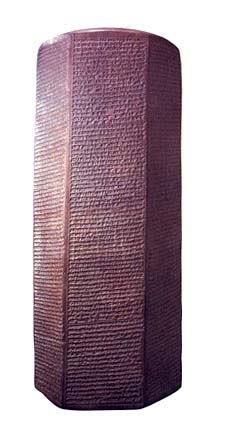Image Details

Oriental Institute, University of Chicago
Sennacherib’s story. Dating to 689 B.C.E., this clay prism contains a detailed description of Sennacherib’s eight campaigns, including the one conducted against Judah and its neighbors in 701 B.C.E. The cuneiform inscription tells of the siege of Jerusalem and the tribute paid by King Hezekiah of Judah; in this, it matches quite closely the Biblical account in 2 Kings 18:13–16. Scholars who believe Sennacherib attacked Jerusalem twice say other annals, now missing, could include a description of a second siege, but, Cogan notes, the history of the seventh century B.C.E. makes that extremely unlikely. Assyria ruled the Near East for almost the entire century: If Sennacherib had failed in a second attack on Jerusalem, there would have to have been a third campaign to re-establish Assyrian rule in Judah. No such campaign is known.
